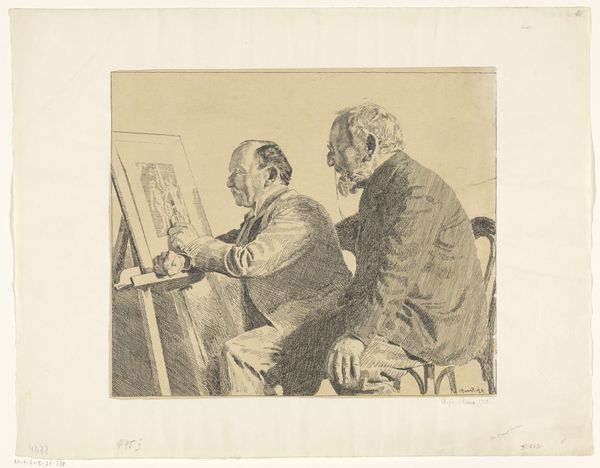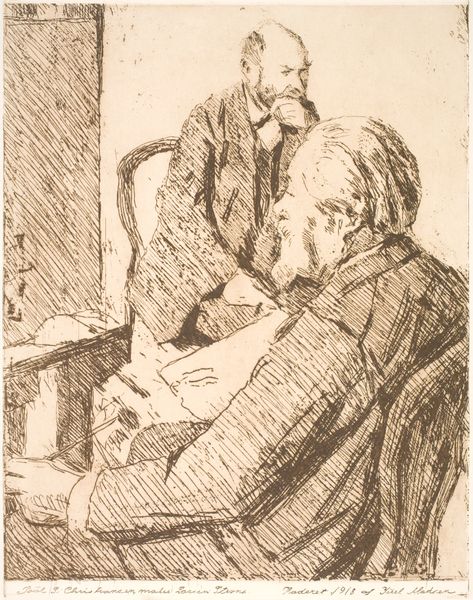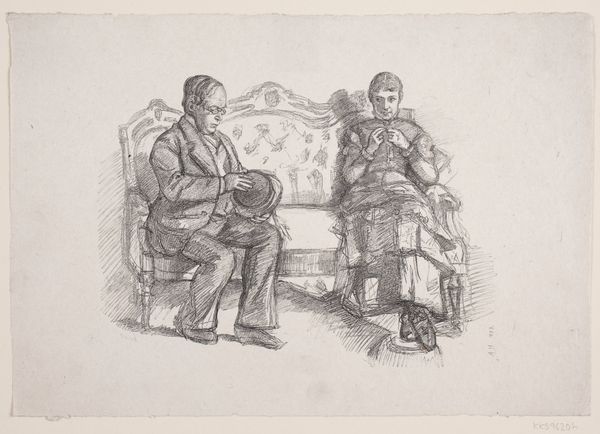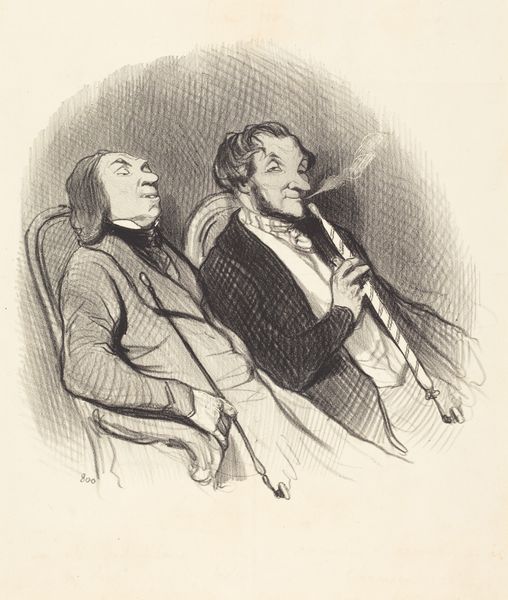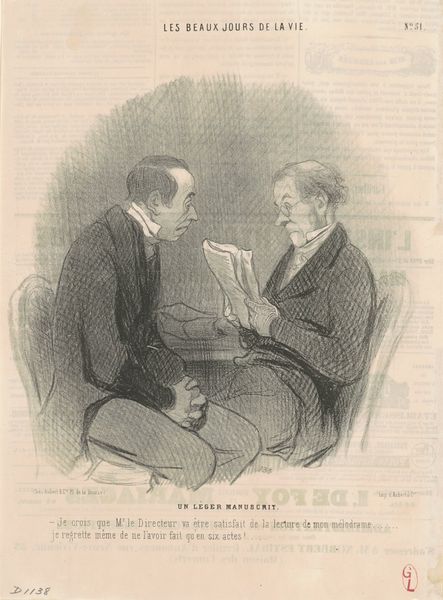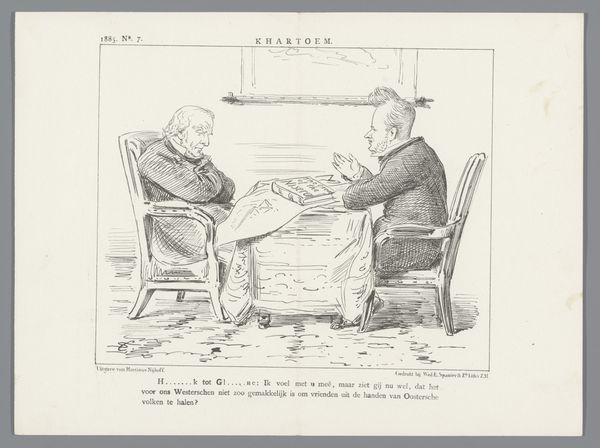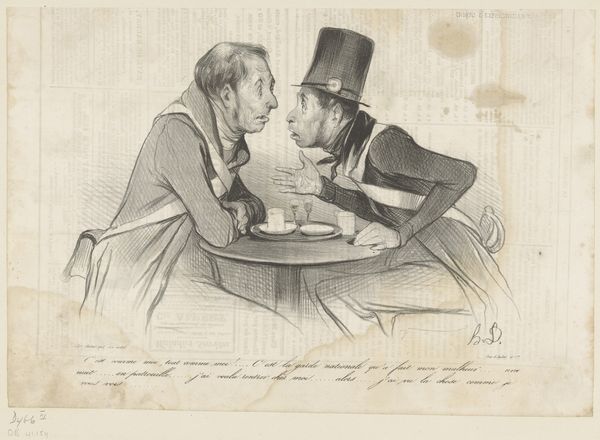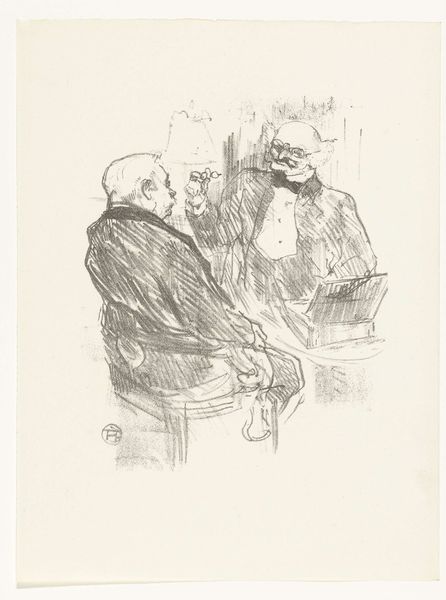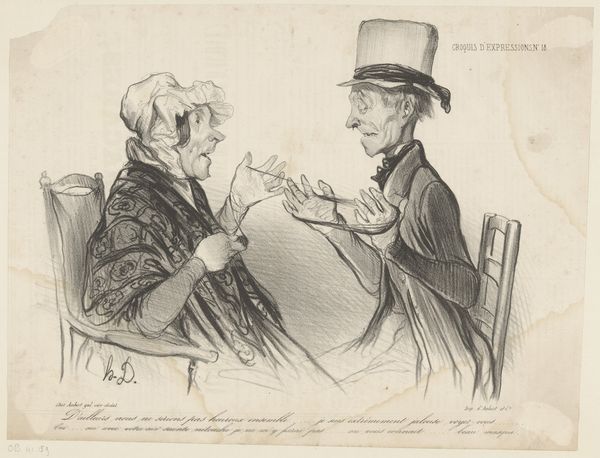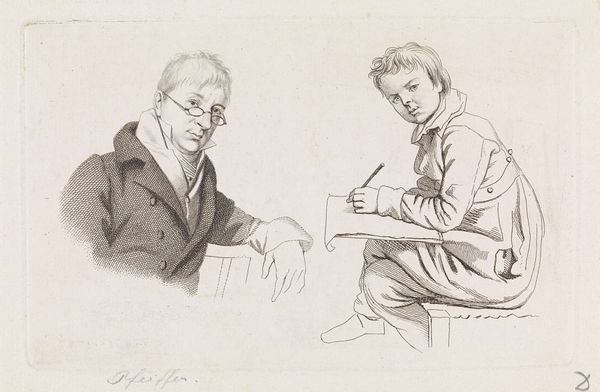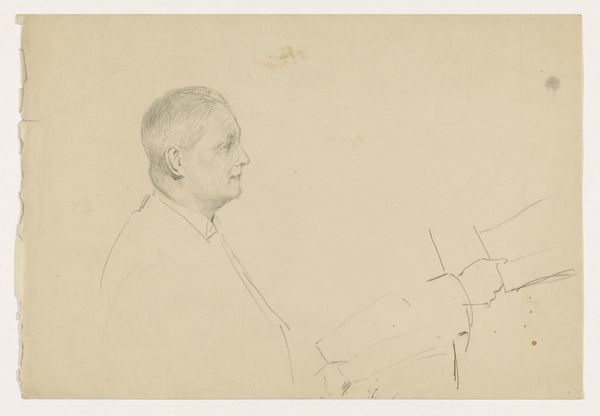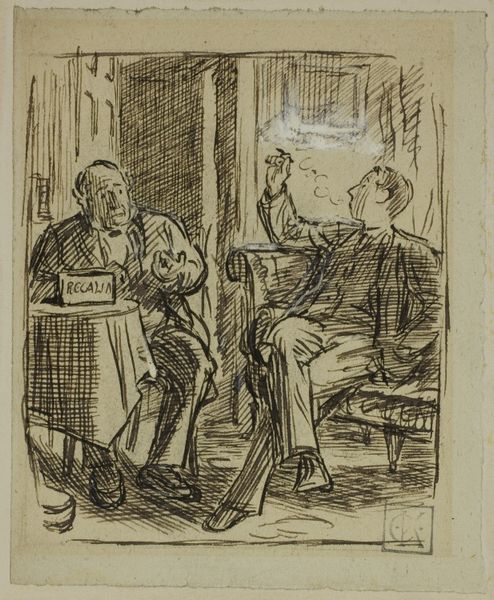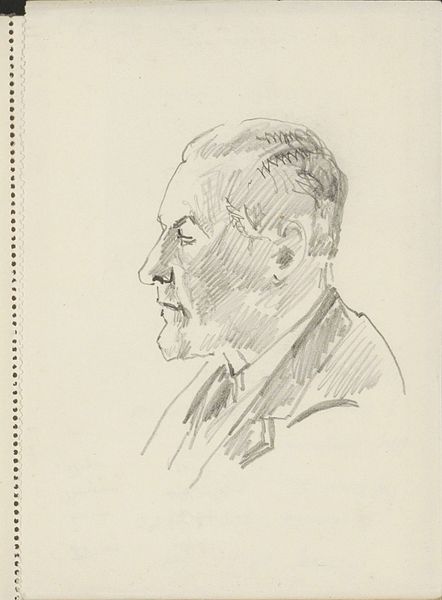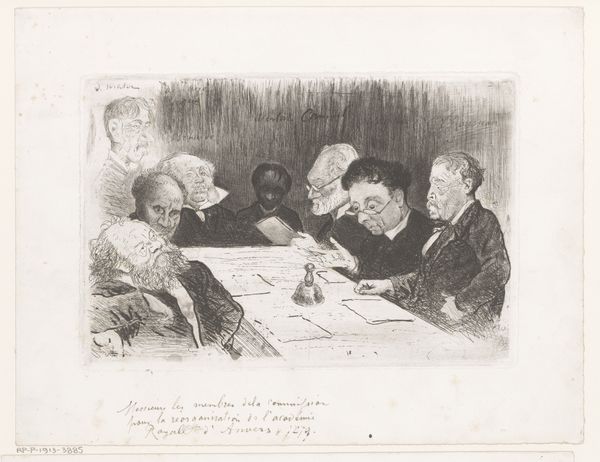
Dubbelportret van de verzamelaars Guido von Usedom en Gustav von Houwald Possibly 1913
0:00
0:00
drawing, pencil
#
portrait
#
pencil drawn
#
drawing
#
pencil sketch
#
pencil drawing
#
geometric
#
pencil
#
portrait drawing
#
pencil work
#
modernism
Dimensions: height 547 mm, width 710 mm
Copyright: Rijks Museum: Open Domain
Curator: Immediately, I’m drawn to the intimacy. The textured hatching creates this tangible space between the two subjects. There's a subtle but complex interplay of gazes that makes me curious about their relationship. Editor: Let’s delve into this intriguing double portrait. The artwork, attributed to Otto Greiner and likely created around 1913, presents us with a sketch in pencil, titled "Dubbelportret van de verzamelaars Guido von Usedom en Gustav von Houwald" or Double Portrait of the Collectors Guido von Usedom and Gustav von Houwald. Curator: So, these are collectors depicted here? It begs the question—what did they collect? How did their shared pursuit influence the composition? Is one of them presenting a piece for consideration, perhaps? Editor: Examining Greiner’s broader artistic output, it's tempting to speculate on his potential socio-political commentary through his representation of the German elite in the 1910s. The cross-hatching, almost obsessive in places, might indicate a certain tension, a societal unease perhaps mirrored in the collectors’ milieu. Was Greiner engaging with societal trends that valued production, perhaps scrutinizing the collectors’ position in the process of artistic consumption and patronage? Curator: Perhaps. But consider how the very *act* of drawing invites intimacy. Pencil on paper: a direct transfer of energy, if you will. Greiner masterfully utilizes this connection through form. Observe how the severe angles of the seated man are softened by the almost benevolent shadow cast by his companion. It isn't just a formal study; it evokes trust or maybe a reliance between them. Editor: However, without insight into Greiner's intentions, any analysis about the patron-artist dynamic remains theoretical. I mean, there could be various approaches related to the production of the sketch such as what paper, pencil or tools were accessible and deemed of a caliber befitting the artist or patron’s expectation. What kind of conversations would have led up to the image being sketched? These aspects offer invaluable context into understanding the means of production. Curator: Maybe that's precisely the drawing's enduring quality: its openness. The limited detail allows for interpretive projection, both for the subjects *then*, and for us now. We are invited into their world, as ambiguous and undefined as any true encounter. Editor: I concur; in its restraint lies a great power, and there are stories imbedded within. It certainly compels us to reconsider our present role as “collectors” of information in today’s world.
Comments
No comments
Be the first to comment and join the conversation on the ultimate creative platform.
